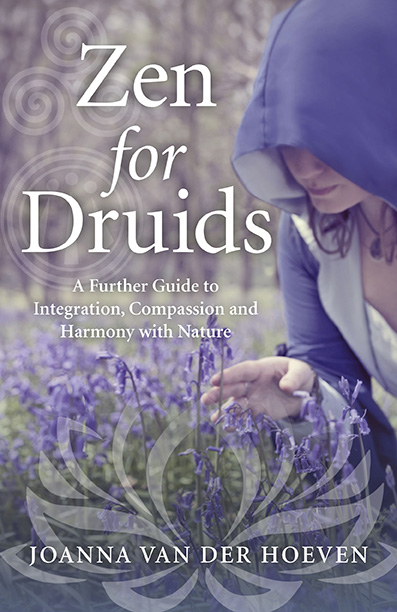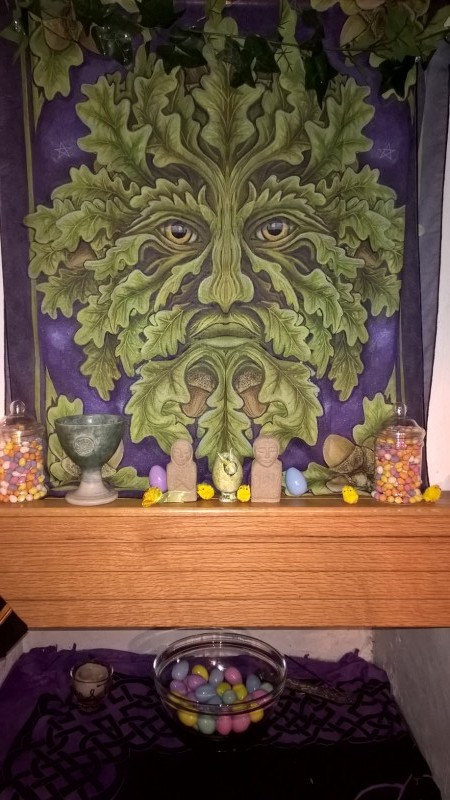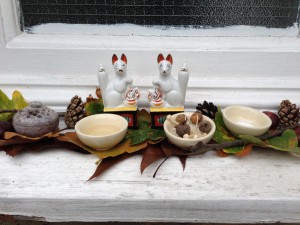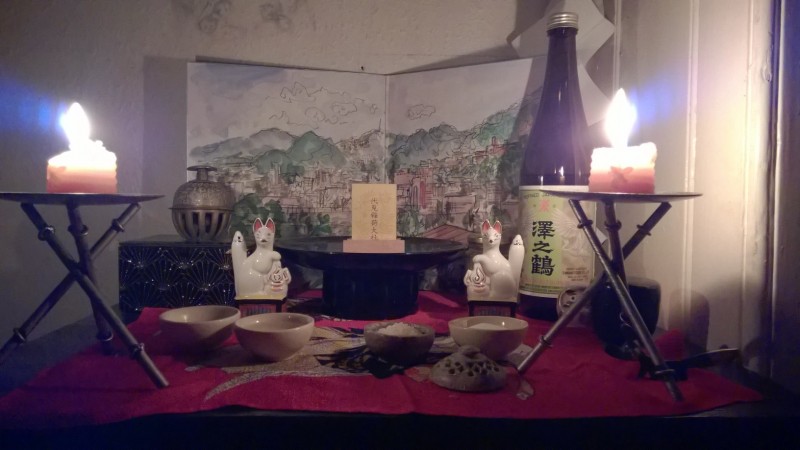
Megan Manson, a leading figure in the pagan-Shinto fusion currently underway in the West
Could you tell us about how you came to be a pagan?
I had been interested in Paganism for many, many years before I actually started practising it! My interest almost certainly comes from my Dad. He isn’t a Pagan (funnily enough he raised me Catholic!), but he is a history buff and he’s always had an interest in the Arthurian legends and ancient Celtic beliefs. I think it was this interest that inspired him to launch a business selling Pagan-related jewellery and gifts, which has been running for about 30 years. So for my family, Paganism was literally our lifeblood – Pagans made up a large percentage of people who bought from us, and therefore they were people upon whom we depended for putting bread on the table.
But despite already having a considerable grounding in Pagan basics from an early age, it wasn’t until much later that I considered myself a Pagan proper. For a long whether the Pagan path was truly right for me. I had continually resisted embracing my passion for Paganism and graduating from “Pagan enthusiast” to “practising Pagan.” What seemed to hold me back was my assumption that I could not consider myself to be both a rational, scientific person and also a follower of a religion. I love science and technology, so how could I essentially turn my back on science by embracing the realm of the supernatural?
How did your interest in Shinto come about?
It was actually Shinto that helped me resolve my “science verses religion” conflict with Paganism! I’d graduated with a degree in Japanese from university prior to working in Japan as an English teacher, and later returned to England to work in the field of Japan-UK relations. I’d written about Shinto and other forms of Japanese spirituality in undergraduate essays, and participated in Shinto directly in Japan by going to Shinto shrines and festivals.
The Japanese have a great respect for science and technology – just look at their contributions to the global field (I believe there are currently 16 Nobel Prize winners from Japan in the fields of physics, chemistry and medicine). But this devotion to science sits comfortably with an open-minded attitude to supernatural experiences and a great enthusiasm for ceremony and ritual based on religion; that’s probably why Japan has so many festivals. There are many possible reasons for the harmonious relationship between the scientific rationality and spiritual outlook held by a large proportion of the Japanese population, but I think one of the most important is that in Shinto, actions take precedence over belief. In my experience, many Japanese aren’t too sure what they believe at all – additionally, they do not consider having well-defined spiritual beliefs as particularly important.
When I realised this, I understood that this was the missing piece of the puzzle for me. I had approached Paganism from a Western, Christian perspective, probably due to my Catholic background. I thought that faith was a fundamental starting point for spirituality, and that one had to essentially choose between whether to trust in science or believe in religion. Shinto taught me that this was not the case at all. It taught me that it was OK to be a Pagan for no other reason than it feeling “right,” and that one could still follow a religion and hold scientific fact to be just as valid. As I grew to learn more about Neopaganism and the Pagan community, I realised that many other Pagans in fact feel exactly the same way.
What do you think paganism and Shinto have in common?
I believe they are far more alike than unlike! To summarise, both have roots in pre-Christian (and in Shinto’s case, pre-Buddhist) folk beliefs, both have elements of polytheism, nature worship, ancestor worship and animism, and both place more emphasis on ritual and living in the “here and now,” rather than abstract philosophies or preparing for the afterlife.
Why do you fuse the two in your practice?
Mainly for the reason that I find both paths speak to me equally so I cannot choose just one to follow exclusively! What’s more, they tend to reinforce each other, lending each other elements and therefore, for me, leading to a more “complete” path. For example, Shinto has little to say about death, other than the idea that it is taboo. But Paganism has lots to say on the subject and how one can honour the deceased and the gods that bring about this natural phenomena. On the other hand, Shinto has a lot of ideas about how nature-based animism can translate into the modern urban lifestyle (Paganism has these ideas too, but they feel a little more well defined in Shinto).
.
Could you give us an example of how you combine the two?
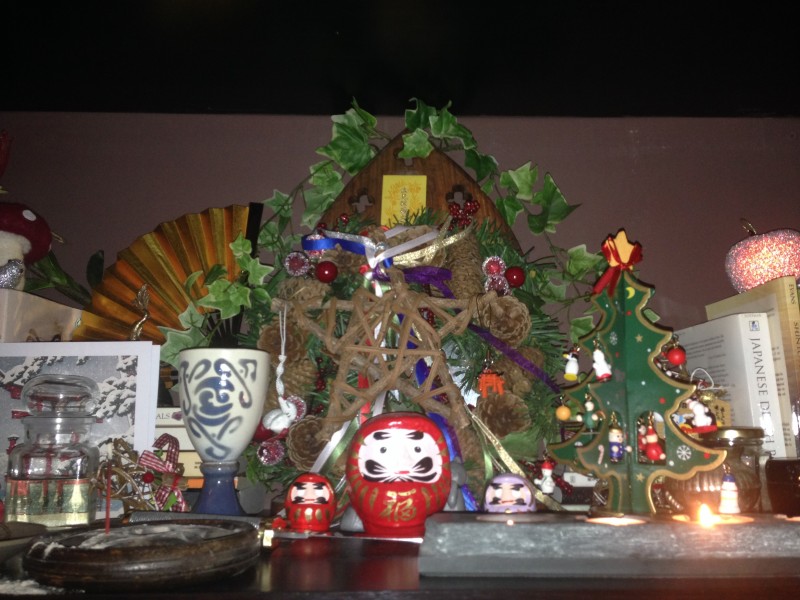
Megan’s Yule altar for 2014 also incorporated O-Shogatsu items (photo c/o Megan Manson)
I often blend Shinto elements into Pagan ritual. For example, when I am purifying the sacred space I want to use, I’ll chant the “Hi-Fu-Mi” norito, which is said to have purification powers. I’ve found this particularly effective at group rituals – whenever I’ve chanted this norito at the beginning, it seems to put everyone in a quiet, contemplative, spiritual mood.
I’ll also blend the traditions for particular festivals in the Pagan and Shinto calendars. For example, the Pagan festival of Imbolc (Feb 1 or 2) is very close to the Japanese festival Setsubun. So I’ll combine them together; I’ll light candles in the Imbolc tradition and scatter beans as is traditional at Setsubun – both rituals are related to banishing negative energy and attracting positive energy. The more you look into the symbolism behind festivals close to each other in the Shinto and Pagan calendars, the more parallels tend to emerge. For example, both Imbolc and Setsubun are associated with a female figure representing fertility and happiness – Brigid for Imbolc, and Otafuku/Uzume for Setsubun.
Do you have a name for the path you’re following, and do you see potential for it spreading more widely?
For want of a better term, I just call it Shinto-Paganism! The term “Eclectic Paganism,” which describes Pagan paths that draw from many different cultural traditions, is already well known and would also be an apt description.
Some people might say that combining practices from opposite sides of the world is strange or wrong. How would you respond?
There will always people who find mixing elements from two different cultures strange or wrong. Certainly it’s strange, but then all religion is strange! (That’s sort of the point, religion is about exploring what’s beyond “normality”). As for it being “wrong,” I cannot see it being any more wrong than any other of the many examples of syncretism between religions we see throughout the world. Japan is perhaps the ultimate example of this – hardly any Japanese practise Shinto in isolation. It is almost always combined with Buddhism, a religion that originally came from India. In fact, the two are so intimately intertwined that it’s become practically impossible to say for sure where one religion ends and the other begins. Combining spiritual beliefs, or any other cultural practices, is just a natural result of cultures coming together, learning from each other, and copying one another’s practices that are found to be beneficial. This results not only in greater understanding and appreciation, of other people but also the creation of entirely new and exciting practices that increase the rich diversity of our cultural heritage as human beings. I can’t see how this can be a bad thing.
For Megan’s blogging, see http://www.patheos.com/blogs/pagantama/
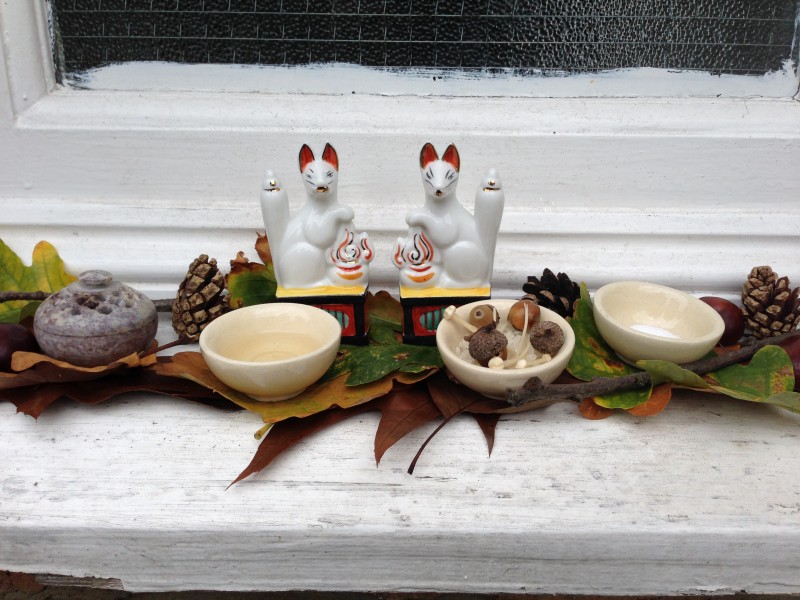
A Shinto “sacred space” in autumn, taken a few years ago and . decorated with fallen leaves (photo Manson)
